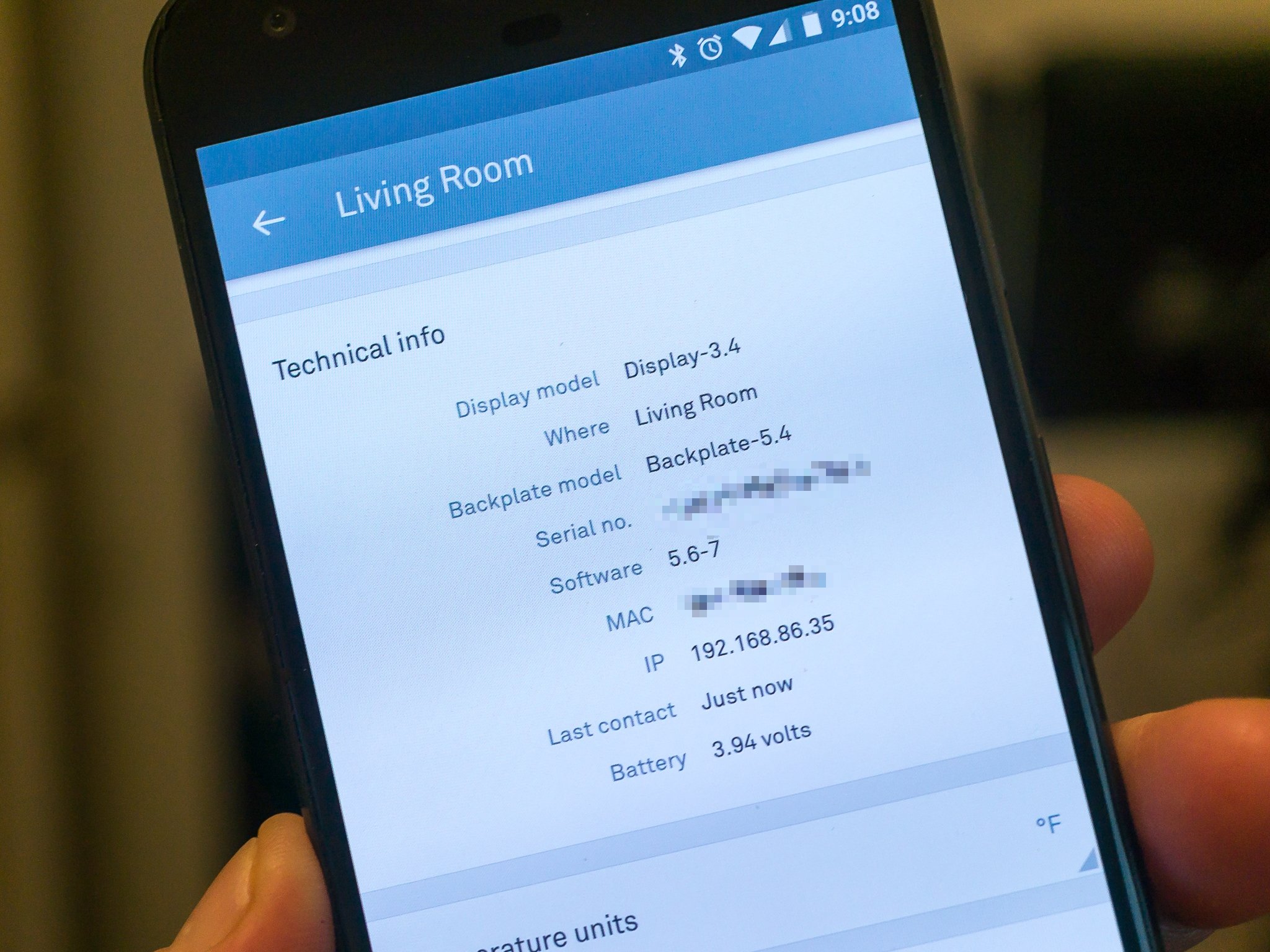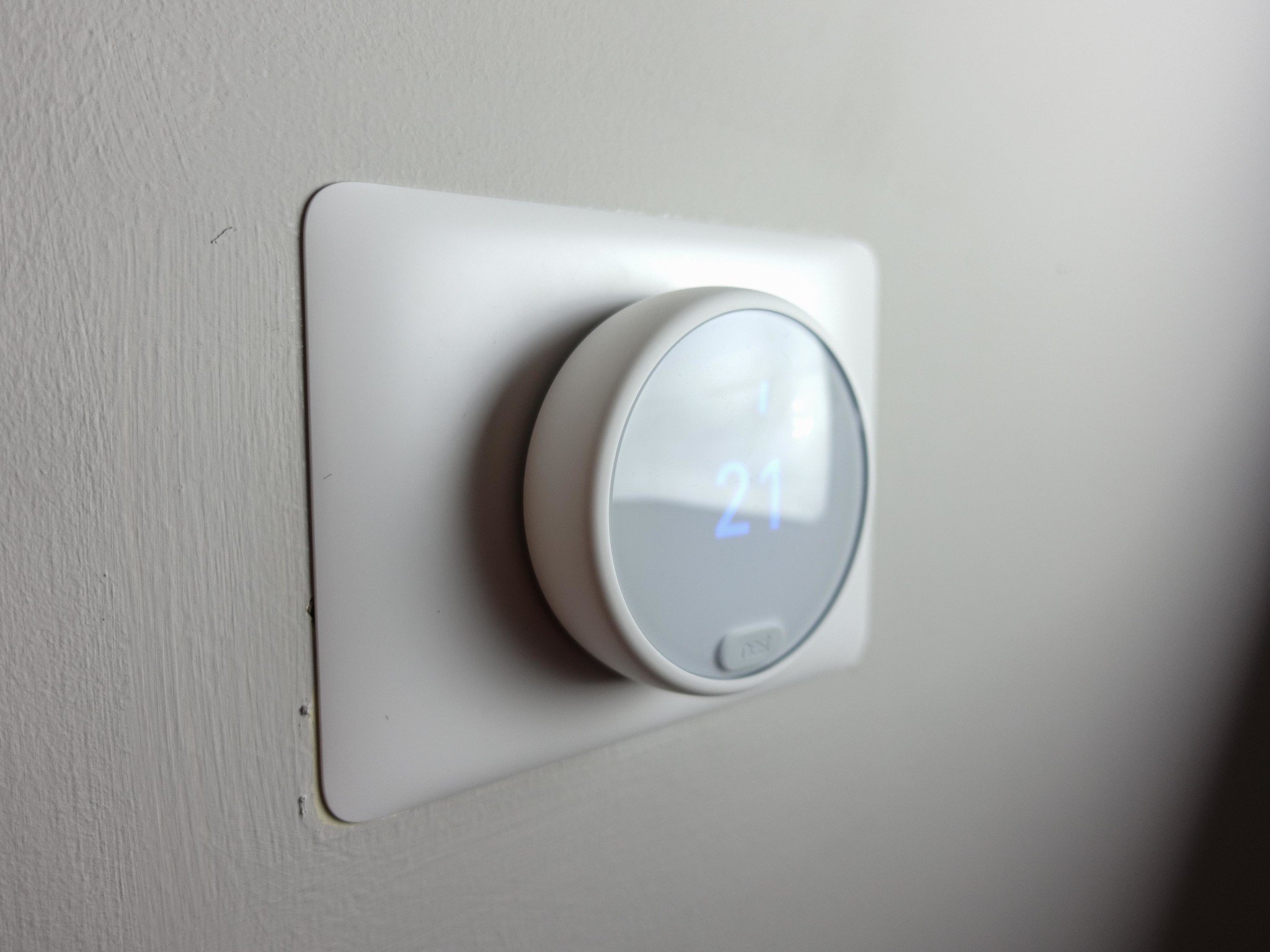See what changed from the first Nest to the current model.
Nest is a company that's been around a while and since the debut in 2011, there have been three generations of hardware. Because a thermostat is something we tend to keep once we buy one there are plenty of older generation units in use and for sale used. While the changes between them aren't as drastic as what we would see in a smartphone, there are some differences worth talking about.
We'll start by talking about what hasn't changed: the overall user experience. When Google bought Nest Labs many were worried that there would be significant "over-engineering" and extra features added that take away from the simple and efficient experience Next delivers. Thankfully, that didn't happen and using a first generation Nest feels very much like using a third generation Nest, even though there are some substantial changes in functionality and compatibility.
Which Nest do I have?
Each generation has a different diameter and thickness, though the differences are very slight. One of the external differences you can easily see is in the trim ring. A gen 1 Nest has a two part ring in stainless steel, and a gen 3 Nest can have a copper, white or black ring. Another external difference is the size of the display, with the generation 3 Nest having a larger (.5 inch difference in diameter) touch screen that the previous models.
You don't have to break out any measuring tools to tell which Nest is on your wall. Just open the Nest app, choose your thermostat and in the upper right corner tap the gear icon to open the settings. Under Technical Info you'll see the Display Model listing. The first digit in the model number corresponds with the hardware version.
Here is a quick overview of the main differences
| Category | Nest Gen 1 | Nest Gen 2 | Nest Gen 3 | Nest E |
|---|---|---|---|---|
| Dimensions | Diameter 3.20 inches Depth 1.44 inches |
Diameter 3.27 inches Depth 1.26 inches |
Diameter 3.25 inches Depth 1.21 inches |
Diameter 3.19 inches Depth 1.14 inches |
| Display | 2.75 inch (diameter) 320 x 320 px |
2.75 inch (diameter) 320 x 320 px |
3.25 inch (diameter) 480 x 480 px |
1.76 inch (diameter) 320 x 320 px |
| Connectivity | 802.11b/g/n @2.4GHz Zigbee @2.4GHz |
802.11b/g/n @2.4GHz 802.15.4 @2.4GHz |
802.11b/g/n @2.4GHz 802.11a/n @5GHz 802.15.4 @2.4GHz Bluetooth LE |
802.11b/g/n @2.4GHz 802.11a/n @5GHz 802.15.4 @2.4GHz Bluetooth LE |
| Sensors | Temperature Humidity Near-Field Activity Far-Field Activity Ambient Light |
Temperature Humidity Near-Field Activity Far-Field Activity Ambient Light |
Temperature (10 sensors) Humidity Near-Field Activity Far-Field Activity Ambient Light |
Temperature Humidity Proximity/Occupancy Ambient light |
| Features | Auto-Schedule Airwave Nest Leaf Auto-Away Energy History Time to Temperature |
Auto-Schedule Airwave Nest Leaf Auto-Away Energy History Time to Temperature System Match Early On Heat Pump Balance |
Auto-Schedule Airwave Nest Leaf Auto-Away Energy History Time to Temperature System Match Early On Heat Pump Balance FarSight Water / Boiler control |
Auto-Schedule Airwave Nest Leaf Auto-Away Energy History Time to Temperature System Match Early On Heat Pump Balance Water / Boiler control |
Changes in gen 2
The biggest difference from the first generation to the second was equipment support. When Nest first arrived it was compatible with approximately 75% of heating and cooling systems in use. That means there were a sizeable number of people who couldn't use a Nest. Gen 2 brought that number to 95% by adding an extra pair of connectors. The new inputs added support for hybrid heat installations and humidistats in addition to 1-2 stage cooling and 1-3 stage heating systems. One last change made it possible to control 24 volts equipment without a common wire back to the thermostat. These changes made it possible to use a Nest thermostat on advanced HVAC systems found in the newest homes.
Generation 2 brought support for more advanced installations and a more custom setup.
Gen 2 Nest thermostats also introduced System Match. System Match determines the wiring connection then asks you a few questions during the installation. This lets Nest tune other features specifically for your setup rather than treat every installation as a standard forced-air system and makes us more comfortable while saving money.
Additional features introduced with gen 2 include Early On mode for cold mornings, filter change reminders and a True Radiant mode that helps the thermostat determine exactly how much heat is being created.
Changes in gen 3
The biggest visible difference between previous models and the generation 3 model is the display. With gen 3 we see a bigger 480 by 480 touchscreen at 229 pixels per inch. This makes it easier to see information across the room so you don't need to open the app on your phone or tablet.
Generation 3 brings a better display and support for water boilers as well as more colors.
Not readily seen but more important are some additional features. Gen 3 Nests can control a water boiler if you have one in your HVAC system. Just like other environmental controls through Nest software you can set limits and schedules for when the boiler is heated and a peak water setting is useful as an override if you have guests or need to use some extra hot water.
Gen 3 also has what Nest calls Farsight. Using special sensors your thermostat can tell when someone enters a room or walks past from up to 5 meters away. There are several things you can display on the screen when a person is sensed, including a clock or a weather widget. Nest users coming home from work can see the current indoor temperature as soon as they walk into the house. You'll know at a glance if you need to adjust the temperature if you arrive earlier than scheduled.
The Nest E
In 2017 Nest debut the newest model in the thermostat line, the Nest E. The most notable change from the Learning Thermostat model is, of course, the price, but there a few other differences between the gen 3 Learning Thermostat and the Thermostat E that you need to know about.
Industrial design versus minimalism
The design shows some obvious differences as well as two that aren't quite so obvious. The Learning Thermostat comes with multiple color options for the metal trim ring, while the Thermostat E comes in plastic white only. The display on the Thermostat E is smaller in both physical size and resolution, but it's also covered with a polarized barrier that hides the edge of the display and slightly blurs the display. This helps the thermostat look like it blends into your wall a bit better, and the effect is really pleasing — I wish my Learning Thermostat was built to look this way.
There is no Farsight support
As far as features go, the Thermostat E does everything the Learning Thermostat does except support Farsight. Farsight is the feature that allows the Learning Thermostat to detect and analyze motion at a distance. The display will light up when it notices you walk by, and the Learning Thermostat has a significantly longer range because of Farsight.
Farsight does more than light up the screen. It's also used to know when you or anyone else is in the house versus when you're away, and that's a big part of the automatic learning a Nest is capable of. It's also a hindrance if you use a manually set schedule and have pets who can be seen by Farsight and will override your set schedule or throw a wrench into the works when the Nest is learning on its own; it can think you're home because it saw the dog mosey over to get a drink from his/her bowl.
Farsight is an amazing bit of tech, but it also isn't perfect for everyone. Just know that it's not an option on the Thermostat E before you buy one.
Compatibility
The gen 3 Learning Thermostat works with over 95% of all heating and cooling systems, including some pretty obscure methods like radiant geothermal passive air systems. With the Nest E, that's been downgraded to "most 24V heating and cooling systems."
The good news is that most really means most. The Nest E is going to work for almost every home in the Americas out of the box. A thermostat is really only a switch that toggles based on the temperature, and regardless of what style of environmental controls you have in your home, the thermostat is still just a low voltage switch. Where things get tricky is when you need to trigger multiple switches to turn on things like auxiliary equipment or multi-stage equipment, and the Nest E is going to be able to work with "most" of those systems, too.
No matter which Nest you're thinking of buying, you should use this compatibility checker to know if it will work for you.
A Nest Thermostat is a great way to keep your house at the temperature you want and save money while doing it. It's reasonably simple to install yourself (professional installation is about $125 if you want to go that way) and works with almost every heating and cooling setup. With full control from your phone or Amazon Echo and Google Home, it's a great first step for an automated lifestyle.



0 Response to "You Can See More: Nest Thermostat Gen 1 through Gen 3 and Nest E: Comparison and main differences"
Post a Comment